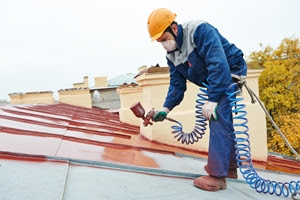Fall protection remains number one cited OSHA violation
According to Safety and Health Magazine, the Occupational Safety and Health Administration has named its fall protection standard the most frequently cited violation again, for the fifth year in a row.
The entire list, which covers fiscal year 2015 is:
- Fall Protection (1926.501)
- Hazard Communication (1910.1200)
- Scaffolding (1926.451)
- Respiratory Protection (1910.134)
- Lockout/Tagout (1910.147)
- Powered Industrial Trucks (1910.178)
- Ladders (1926.1053)
- Electrical – Wiring Methods (1910.305)
- Machine Guarding (1910.212)
- Electrical – General Requirements (1910.303)
Falls are considered the most serious cause of work related injuries and deaths. OSHA requires that fall protection be provided at elevations of four feet in general industry workplaces, five feet in shipyards, six feet in construction, and eight feet in long-shoring operations. It is also required to provide fall protection when working over dangerous equipment and machinery, regardless of the fall distance.
In order to prevent the occurrence of falls in the workplace employers must:
- Use a railing and toe-board or a floor hole cover to guard every hole in which a worker can accidentally walk into.
- Provide a guard rail and toe-board around every elevated open sides platform, floor or runway.
- Employers must provide protection, regardless of height, if there is a chance that a worker can fall into a dangerous area or onto machinery.
- Provide other means of protection, such as a safety harness and line, nets, stair and railings or hand rails as necessary in each separate industry.
OSHA requires that employees:
- Keep floors in work areas clean, as well as possible, and in dry condition
- Provide working conditions free of any known dangers.
- Select and provide required personal protective equipment at no cost to employees.
- Train workers about job hazards in a manner and language in which they can understand.
Falls are preventable. Keeping the three following steps in mind, and employers can also reduce the risk of injury and death at their workplace.
Plan: Before a work day or new project begins, employers should plan out exactly how they will protect their employees from harm. When working from heights, as simple as needing a ladder three feet off the ground, or using a scaffold 20 feet in the air, safety equipment and an understanding of implemented guidelines must be known. While estimating the cost of a job, employers should keep safety costs in mind including equipment and tools.
Provide: Not every ladder is right for every job. Employers have a responsibility to provide the best equipment to complete a job while keeping their workers safe. Employees who are six feet or higher off the ground are at serious risk for injury or death. Using equipment such as a personal fall arrest system (PFAS) is often best.
Train: Falls can be prevented when employees understand the real risk and how to protect themselves. There are many training resources available that can help.
Falls should always be a serious concern in any industry. Protect your workers today.
Source
